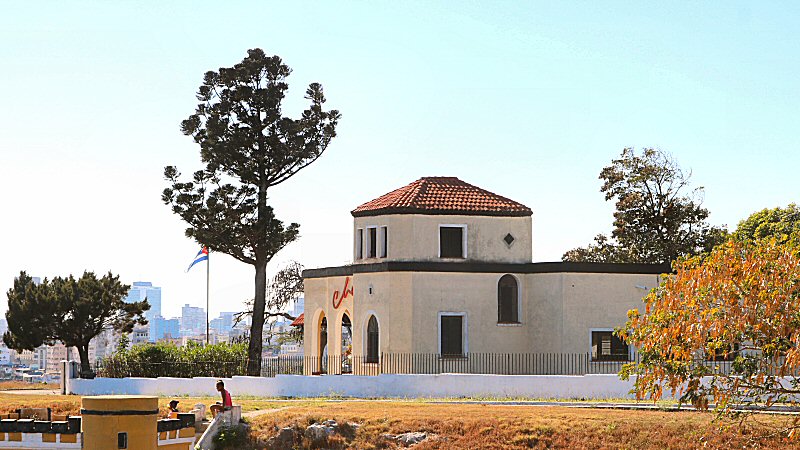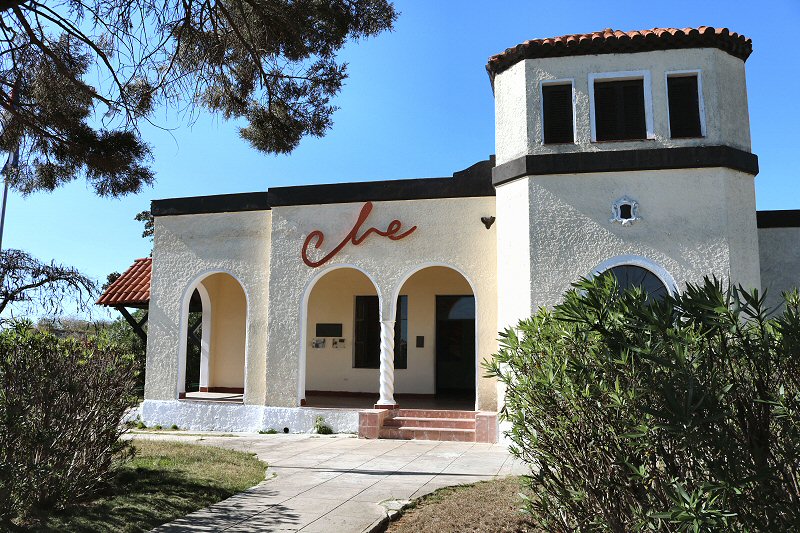
The Centro Cultural Casa del Che is
located within the Parque Histórico Militar Morro Cabaña, on the
north side of entrance channel of the Bay of Havana, very close
to the giant sculpture Cristo de La Habana.

The Centro Cultural Casa del Che is the
first house that Che stayed in Havana after the triumph of
the revolution, when Fidel Castro charged him with the
surveillance of the trials and the executions of the war
criminals, the traitors and the former members of the Buró
Para Represión de las Actividades Comunistas (Bureau for the
Repression of Communist Activities, BRAC) in the Fortelaza
de San Carlos de la Cabaña. Batista’s secret service BRAC
was headed by Mariano Faget, who had first gained fame when
he was the chief of the Oficina de Investigación de
Actividades Enemigas (Office of Investigation of Enemy
Activities), a counter-espionage unit that targeted the
Nazi’s and other fascist groups. BRAC, aided in its
development and encouraged by the CIA, starting in 1956, had
gained a reputation for brutality in its fight against the
26th July Movement.
When Che Guevara arrived in Havana from
Santa Clara in January 1959, as the Commander of the
Military Department of the Cabaña, he used the command post
in the western barracks of La Cabaña as his office that is
converted into a museum, the Museo de Comandancia del Che,
today, and stayed in this house that is converted to a
cultural center, the Centro Cultural Casa del Che, today.
The house belonged to the head of Batista's army regiment,
Roberto Fernandez Miranda, that fled to the US two days
before the arrival of Che. The distance between the two
offices of Che is about 1,2 km.
Che Guevara started to stay in the house
after January 3, 1959. During his stay of 3 months, he
shared the house with a part of the column (platoon) 8 Ciro
Redondo. The column 8 Ciro Redondo, commanded by Che
Guevara, was an armed organization, created by Fidel Castro
in 1956 to carry out the revolutionary fight against the
dictatorship of Fulgencio Batista by extending the guerrilla
struggle to the west of the country (to the west of Santa
Clara). Ciro Redondo (1931-1957) is the member of the 26th
of July Movement that took part in the assault on the
Moncada barracks. He reached the rank of captain, and after
his death in the combat against the Batista’s troops, he was
promoted to the rank of Commander of the Rebel Army.
As it is evident from the simplicity of
his bedroom, Che used the house as a place of work more than
a house where he rested. In this house he received the
visits of the distinguished leaders of the revolution and
debated with them. It was this house that some of the most
important issues of the Cuban revolution were discussed and
decided. He worked particularly on the Agrarian Reform Law
in this house. Che Guevara and his personal assistant Aleida
Match were engaged in this house and got married in the
modest house of his escort and driver Juan Alberto
Castellanos in June 1959.
During one of his visits Fidel Castro persuaded Che Guevara that was suffering of asthma, to leave the house and to move to a place closer to the beach that would be more beneficial for his health. After Che left the house at the end of March 1959, the house was closed until 1970, when it was opened as the House Museum. Then it was occupied by the Faculty of Geodesy and Cartography of the Artillery School. After a restoration, it was inaugurated in honor of Che Guevara as the Centro Cultural Casa del Che in 2006.

